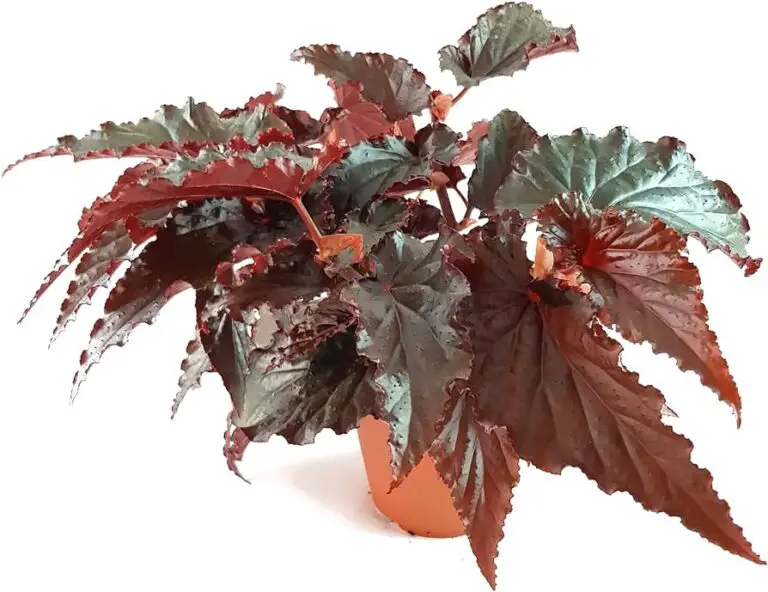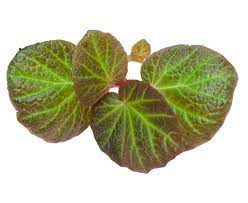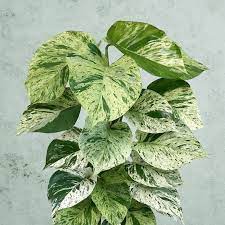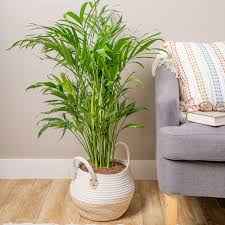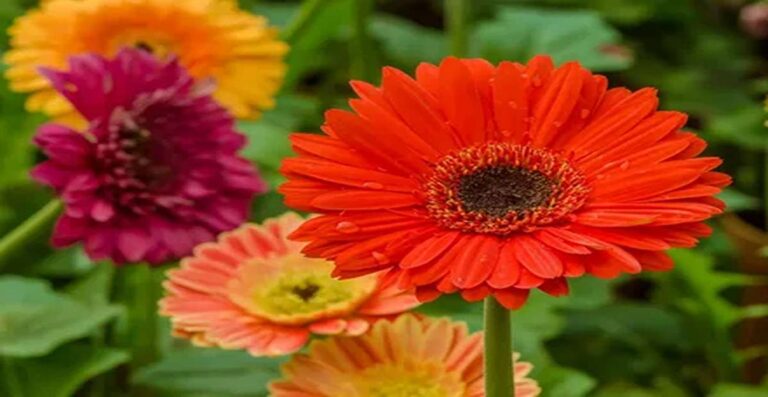Introduction
Welcome to the vibrant world of begonias, where beauty meets resilience in the realm of gardening. In this guide, we’ll explore the essentials of planting and caring for begonias, unlocking the secrets to cultivate these exquisite blooms with ease. Whether you’re a seasoned gardener or a green thumb in the making, this article is your key to nurturing begonias in various environments. Let’s dive into the fascinating journey of how to plant, grow, and care for begonias, ensuring your garden is adorned with the allure of these versatile and colorful flowers.
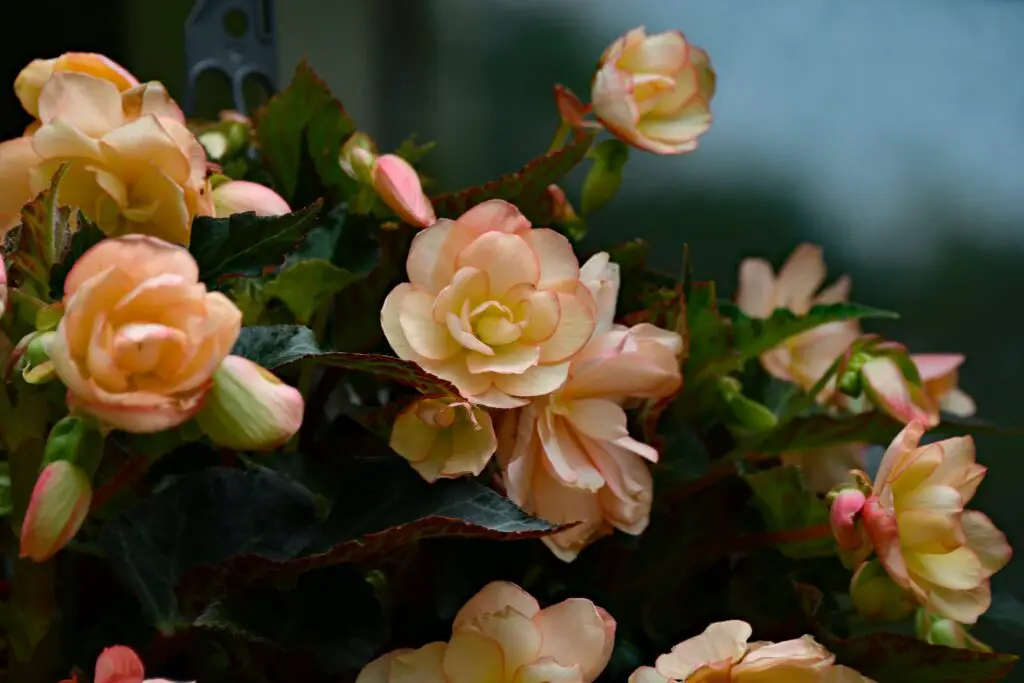
Overview of Begonias
Begonias, known for their diverse and captivating varieties, offers a splendid addition to any garden. Understanding the broad categories is the first step to mastering the art of cultivating these beauties.
Begonia Types: Begin your journey by acquainting yourself with the different types of begonias. From the classic Wax Begonias to the exotic Rhizomatous and striking Rex Begonias, each type boasts unique characteristics that contribute to the overall charm of these plants.
Common Begonia Types: Explore the specific characteristics of Wax, Tuberous, Cane, Rhizomatous, and Rex begonias. Uncover the nuances that make each type distinct, helping you make informed choices for your garden.
Begonia Varieties: Dive deeper into the world of begonias by exploring specific varieties. From the vibrant ‘Bellagio Apricot’ to the elegant ‘Whopper,’ each variety adds its own flair to your garden. This section will provide insights into the zones, height/spread, exposure, bloom time, and color of these begonia varieties.
Understanding the basics of begonia types and varieties sets the stage for successful cultivation. Now, let’s move on to the practical aspects of planting these enchanting flowers.
Planting Begonias
Now that you’re acquainted with the diverse world of begonia types and varieties, let’s roll up our sleeves and delve into the essentials of planting these captivating blooms. From timing to the actual process, this section will guide you through the steps to ensure your begonias thrive.
When to Plant: Timing is crucial when it comes to planting begonias. These flowers are sensitive to temperature, so it’s essential to choose the right season. In general, the ideal time to plant begonias is in the spring after the risk of frost has passed. This ensures a warm and stable environment for optimal growth.
Where to Plant: Begonias are versatile, but choosing the right location is key to their success. Opt for spots with well-draining soil and partial shade. While they can tolerate some sunlight, too much can scorch their delicate leaves. Consider planting them in flower beds, containers, or hanging baskets to elevate your garden’s aesthetic.
How to Plant: The actual planting process involves a few simple steps. Begin by preparing the soil with organic matter to enhance its fertility and drainage. Dig holes that accommodate the size of the begonia roots, ensuring they are planted at the same depth as they were in their containers. Water thoroughly after planting to settle the soil.
Ensuring the right conditions during planting establishes a solid foundation for your begonias. In the next section, we’ll transition from planting to the ongoing care these flowers require to flourish.
Begonia Care
Congratulations on successfully planting your begonias! Now, let’s shift our focus to the ongoing care required to nurture these beautiful blooms. From providing the right light to warding off pests, this section will guide you through every aspect of ensuring your begonias thrive.
How to Care for Begonias: Proper care begins with understanding the specific needs of your begonias. This includes paying attention to their preferred light conditions, soil requirements, and watering schedule. Begonias generally thrive in filtered sunlight, well-draining soil, and prefer consistently moist conditions. Striking the right balance ensures your begonias remain healthy and vibrant.
Light, Soil, and Water: Highlighting the crucial trio of light, soil, and water, this subsection delves deeper into the specific requirements for each. Begonias appreciate bright, indirect light, making them suitable for both indoor and outdoor settings. Additionally, the type of soil and watering frequency play a pivotal role in their overall well-being.
Temperature and Humidity: Begonias are sensitive to temperature fluctuations and thrive in moderate climates. Maintaining a consistent temperature and humidity level is vital for their optimal growth. Be mindful of extreme conditions, as both too hot and too cold temperatures can adversely affect your begonias.
Fertilizer: To enhance the vitality of your begonias, incorporating a balanced fertilizer is key. Explore the appropriate fertilization schedule and the type of fertilizer best suited for these plants. This ensures they receive the necessary nutrients to produce vibrant blooms.
Pruning: Pruning is a valuable practice in maintaining the shape and health of your begonias. Learn the art of pruning to encourage bushier growth and remove any diseased or damaged parts. This simple yet effective technique contributes to the overall aesthetics of your begonia display.
Common Pests and Diseases: Even the most well-cared-for plants can encounter challenges. This section identifies common pests and diseases that may affect begonias, providing insights into prevention and treatment. Stay ahead of potential issues to keep your begonias thriving.
By mastering the art of ongoing care, you’re not just growing begonias; you’re cultivating a spectacle of natural beauty. In the next section, we’ll explore the unique considerations when growing begonias indoors, allowing you to enjoy their charm year-round.
Growing Begonias Indoors
Begonias, with their captivating blooms and lush foliage, make fantastic indoor companions. This section will guide you through the nuances of cultivating begonias indoors, ensuring they not only survive but thrive in the controlled environment of your home.
Water and Humidity: Indoor environments often differ in humidity levels from outdoor spaces. Learn the optimal watering practices for indoor begonias, striking a balance between keeping the soil consistently moist without leading to waterlogged conditions. Additionally, consider methods to maintain the necessary humidity, such as using trays of water or a humidifier, especially during dry seasons.
Location: Choosing the right spot within your home is crucial for the well-being of indoor begonias. They typically prefer bright, indirect light. Place them near windows with filtered sunlight, ensuring they receive adequate illumination without direct exposure to harsh rays. Rotate the pots periodically to promote even growth.
Potting: Selecting the right pot and potting mix is essential for successful indoor begonia cultivation. Opt for a well-draining potting mix rich in organic matter. Ensure that the chosen container has drainage holes to prevent waterlogging, promoting a healthy root system.
Cultivating begonias indoors allows you to enjoy their beauty year-round, bringing a touch of nature into your living spaces. In the following section, we’ll explore the possibilities of incorporating begonias into your garden with a focus on specific varieties and their unique characteristics.
20 Beautiful Indoor Plants With Fragrance
Begonia Varieties
Delve into the world of begonia varieties, where a diverse array of colors, sizes, and forms awaits. From the classic ‘Bellagio Apricot’ to the bold ‘Whopper,’ each variety brings its own charm to the garden. Let’s explore some of the popular begonia varieties, shedding light on their specific attributes.
Specific Varieties:
- ‘Bellagio Apricot’: This variety is celebrated for its warm apricot hues, adding a touch of elegance to any garden. With compact growth and prolific blooms, ‘Bellagio Apricot’ is a favorite for borders and containers.
- ‘Whopper’: True to its name, the ‘Whopper’ begonia boasts large, eye-catching blooms. With vibrant colors like coral and red, this variety steals the spotlight in both garden beds and hanging baskets.
- ‘Dragon Wing Red‘: Known for its unique wing-shaped foliage, this begonia variety is a standout. ‘Dragon Wing Red’ offers a brilliant display of red blooms and is well-suited for hanging baskets or as a ground cover.
- ‘Big Red with Green Leaf’: The contrasting colors of red blooms against green leaves make this variety visually striking. Its upright growth habit makes it an excellent choice for borders and landscaping.
- ‘Rex Begonias’: Renowned for their stunning foliage, Rex begonias come in various patterns and colors. These are primarily grown for their unique and intricate leaves, making them a favorite among foliage plant enthusiasts.
Zones, Height/Spread, Exposure, Bloom Time, and Color: For each variety, understand the specific requirements to ensure optimal growth. This includes the hardiness zones where they thrive, their mature height and spread, preferred exposure to sunlight, bloom time, and the range of colors they offer.
Diversifying your garden with different begonia varieties adds layers of visual interest and ensures a dynamic display throughout the growing season. In the next section, we’ll explore the art of propagating begonias, allowing you to expand your collection and share the beauty of these flowers with others.
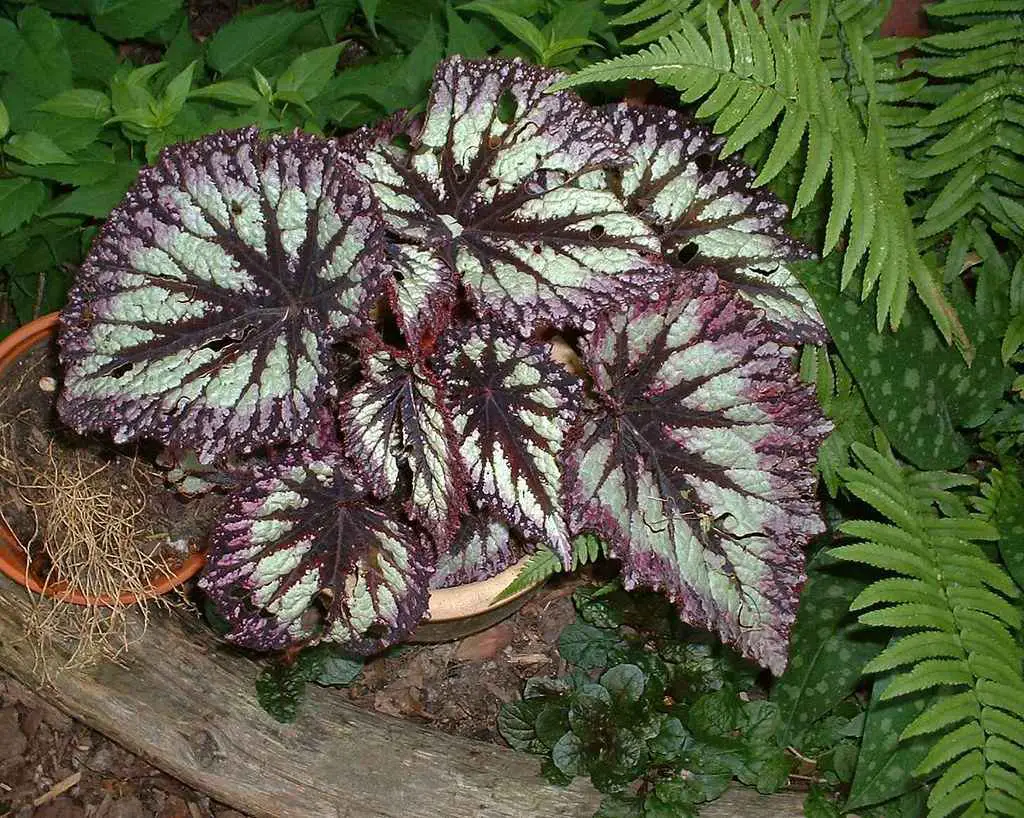
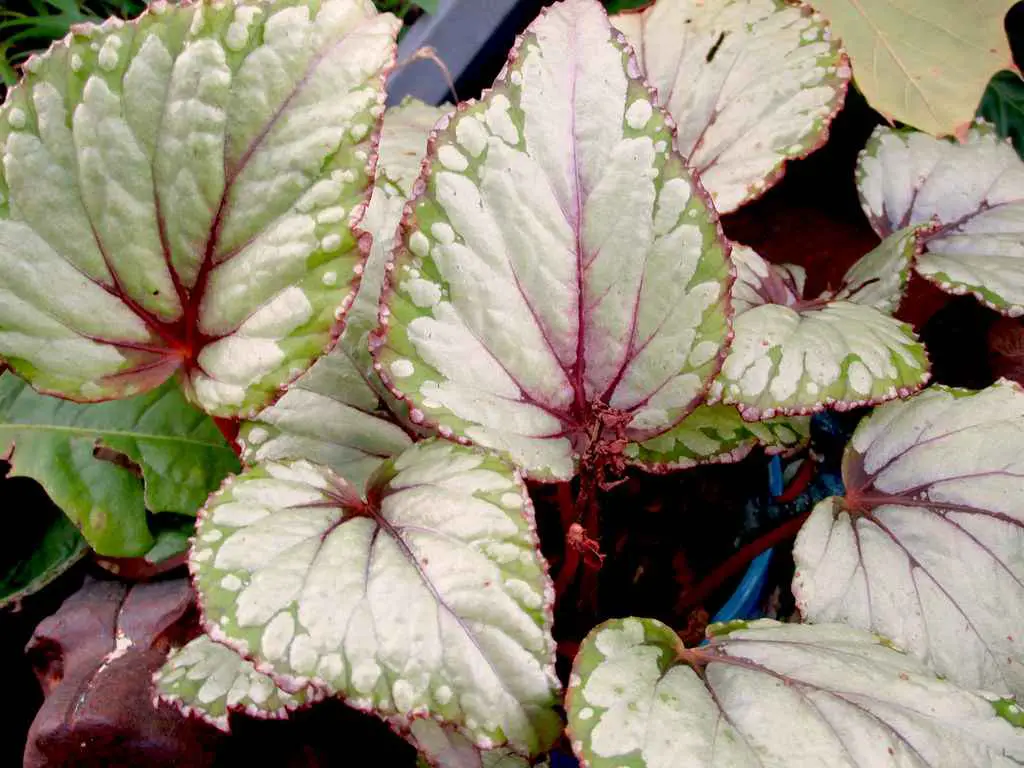
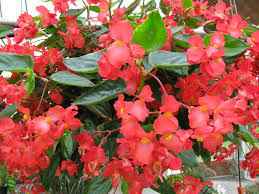
Propagation
Unlock the potential for expanding your begonia collection by delving into the art of propagation. This section will guide you through the methods of reproducing begonias, whether you want to share your favorites with friends or simply increase the abundance of these beautiful blooms in your garden.
How to Propagate Begonias: Begonias can be propagated through various methods, and understanding each approach empowers you to choose the one that best suits your preferences and gardening style.
- Leaf Cuttings: One of the most common and straightforward methods is propagating begonias from leaf cuttings. Select a healthy, mature leaf, making sure it includes a portion of the stem. Place the cutting in a suitable rooting medium until roots develop, and then transplant it into a new container or garden bed.
- Stem Cuttings: Another effective method is using stem cuttings. Snip a section of a healthy stem, ensuring it includes a node. Similar to leaf cuttings, root the stem in a growing medium until it establishes a robust root system.
- Division: For varieties that produce multiple stems or bulbs, division is an excellent option. Gently separate the bulbs or stems, making sure each division has roots attached. Replant them in individual containers or designated spots in the garden.
Growing Begonias From Seed: If you prefer starting from scratch, growing begonias from seeds allows you to witness the entire lifecycle of these fascinating plants. Sow the seeds in a well-prepared seed-starting mix, keeping them consistently moist until they germinate. Transplant the seedlings into individual pots or directly into the garden once they’ve developed sufficient strength.
Overwintering: As winter approaches, consider overwintering your begonias. Depending on the variety, this may involve bringing potted begonias indoors or providing protective coverings for those in the garden. By safeguarding your plants during the colder months, you ensure their vitality when the next growing season arrives.
Propagation opens the door to a world of possibilities, allowing you to share the beauty of begonias with others and create a thriving garden filled with your favorite varieties. In the following sections, we’ll address common pests and diseases, as well as tips on getting begonias to bloom for a spectacular floral display.
Houseplants and Containers
Embrace the versatility of begonias by incorporating them as houseplants or container garden additions. This section will guide you through the considerations and techniques for successfully growing begonias in pots, allowing you to enjoy their beauty both indoors and on your patio.
Begonias as Houseplants: Transform your indoor spaces into lush havens by bringing begonias indoors. Select compact varieties that adapt well to pot culture. Place them near windows with filtered sunlight, and ensure proper humidity to mimic their natural habitat. Regularly rotate the pots to promote even growth, and be attentive to their specific light, soil, and water requirements.
Growing Begonias in Pots: Container gardening offers the flexibility to move your begonias around, creating dynamic displays throughout your outdoor spaces. When selecting pots, prioritize those with drainage holes to prevent waterlogging. Use well-draining potting mix enriched with organic matter to provide the necessary nutrients. Grouping pots together can create visually appealing arrangements.
Common Pests and Plant Diseases: Container gardening, while convenient, can present unique challenges. Be vigilant for common pests like aphids and spider mites, which can affect begonias in pots. Regularly inspect your plants and treat any issues promptly. Additionally, container-grown begonias may be more susceptible to diseases caused by overwatering or poor drainage, so ensure a proper watering schedule.
How to Get Begonias to Bloom: Encouraging your begonias to bloom is a rewarding experience. Adequate sunlight, the right fertilizer, and proper care contribute to prolific flowering. Be mindful of the specific needs of your begonia variety and adjust care practices accordingly. Deadheading spent blooms can also stimulate continuous flowering.
By mastering the art of growing begonias in containers, you have the flexibility to enhance both indoor and outdoor spaces with these captivating blooms. In the subsequent sections, we’ll address common problems that may arise, ensuring your journey with begonias remains vibrant and thriving.
Common Pests and Plant Diseases
While cultivating the beauty of begonias, it’s essential to be aware of potential challenges that may arise in the form of pests and diseases. This section will equip you with knowledge on identifying, preventing, and treating common issues, ensuring your begonias remain healthy and vibrant.
Pests: Despite their resilience, begonias can be susceptible to pests that can hinder their growth and overall well-being. Keep a watchful eye for common culprits such as aphids, spider mites, and mealybugs. These pests can be controlled through various methods, including insecticidal soap, neem oil, or introducing natural predators.
Fungal Diseases: Fungal diseases, often spurred by excessive moisture or poor air circulation, can affect begonias. Gray mold, powdery mildew, and root rot are common fungal issues. To prevent these, ensure proper spacing between plants, promote good air circulation, and avoid overwatering. Fungicides can be used if fungal diseases are detected early.
Common Problems With Begonias: Understanding and addressing common problems is key to maintaining the health and vigor of your begonias. This subsection will cover issues like browning tips, leaves turning yellow, and leaves with holes. Adjusting watering practices, providing appropriate lighting, and promptly addressing any signs of distress can mitigate these problems.
How to Get Begonias to Bloom: Begonias, like any flowering plants, thrive when their blooming potential is realized. This section will revisit the factors influencing begonia blooms, emphasizing the importance of proper sunlight, well-balanced fertilization, and attentive care. Deadheading spent flowers is a simple yet effective technique to encourage continuous blooming.
Navigating through potential challenges ensures a thriving begonia garden. Armed with the knowledge of common pests and diseases, you’re better prepared to create an environment where your begonias can flourish. In the next section, we’ll explore the fascinating world of begonia propagation, allowing you to expand your garden and share the beauty of these blooms with others.
How to Get Begonias to Bloom
Unlocking the full splendor of begonias lies in their prolific blooming. This section will guide you through the essential steps to ensure your begonias burst into vibrant displays of color, creating a breathtaking spectacle in your garden or indoor spaces.
1. Adequate Sunlight: Begonias thrive in bright, indirect light. To stimulate blooming, ensure they receive the right amount of sunlight. For indoor begonias, place them near east or west-facing windows where they can enjoy filtered sunlight. Outdoor begonias benefit from partial shade, protecting them from the harsh midday sun.
2. Well-Balanced Fertilization: Fertilization is a crucial aspect of promoting robust flowering. Choose a well-balanced, water-soluble fertilizer with a formulation like 10-10-10 or 20-20-20. Apply the fertilizer according to the package instructions, usually every 2-4 weeks during the growing season. This provides the essential nutrients needed for healthy growth and abundant blooms.
3. Proper Watering: Maintaining consistent moisture is key to begonia blooming success. While begonias prefer slightly moist soil, overwatering can lead to root rot and other issues. Water when the top inch of soil feels dry, and always use well-draining soil to prevent waterlogged conditions. Adjust the watering frequency based on the specific needs of your begonia variety.
4. Temperature Considerations: Begonias thrive in moderate temperatures, and their blooming can be influenced by extremes. Avoid exposing them to sudden temperature fluctuations, as this can stress the plants and affect flowering. Maintain a stable and comfortable temperature range to encourage optimal growth and blooming.
5. Deadheading Spent Blooms: Removing spent flowers, known as deadheading, is a simple yet effective technique to encourage continuous blooming. Snip off faded blooms regularly to redirect the plant’s energy towards producing new flowers. This not only promotes a tidy appearance but also prolongs the blooming period.
6. Pruning for Shape and Encouraging Blooms: Pruning plays a crucial role in shaping your begonias and encouraging blooming. Trim back leggy stems to promote bushier growth and remove any diseased or damaged parts. This ensures a well-maintained and flourishing plant, ready to showcase its blossoms.
By incorporating these practices into your begonia care routine, you’re setting the stage for a vibrant and blooming spectacle. Now that you’ve mastered the art of getting begonias to bloom, you can fully appreciate the beauty and charm these flowers bring to your garden or indoor spaces. In the subsequent sections, we’ll address common problems and provide tips on caring for begonias in various settings.
Common Problems With Begonias
While begonias are generally resilient, they can face challenges that, if left unaddressed, may affect their health and appearance. This section will guide you through common problems encountered in begonia care and provide solutions to ensure your plants remain robust and vibrant.
1. Browning Tips: Browning tips on begonia leaves can be a sign of various issues. It may indicate underwatering, low humidity, or exposure to direct sunlight. Ensure your begonias receive consistent moisture, consider increasing humidity levels, and move them to a location with filtered sunlight to alleviate browning tips.
2. Leaves Turning Yellow: Yellowing leaves can result from overwatering, poor drainage, or nutrient deficiencies. Adjust your watering routine to prevent waterlogged conditions, ensure proper drainage, and consider fertilizing with a balanced fertilizer to address nutrient deficiencies. Yellow leaves should be removed to promote overall plant health.
3. Leaves With Holes: Holes in begonia leaves can be attributed to pests such as slugs, snails, or caterpillars. Conduct regular inspections and employ natural methods like handpicking or introducing beneficial insects to control pests. In severe cases, consider using organic pesticides, ensuring they are safe for begonias.
4. Overwintering Challenges: Overwintering begonias can be tricky, especially in colder climates. To protect your plants during winter, consider bringing potted begonias indoors or providing adequate covering for those in the garden. Mulch around outdoor begonias to insulate the roots. Ensure they are not exposed to harsh winter conditions.
5. Getting Leggy: Leggy growth, characterized by elongated stems and sparse foliage, can occur when begonias do not receive sufficient light. To address this, relocate your plants to a spot with brighter, indirect light. Pruning can also help promote bushier growth and maintain a more compact, attractive shape.
6. Fungal Diseases: Fungal diseases, such as gray mold and powdery mildew, can affect begonias, particularly in conditions of high humidity. Ensure proper air circulation by spacing plants adequately and avoiding overwatering. Fungicides can be used preventatively or as a treatment if fungal issues arise.
Vigilance and prompt action are key to maintaining healthy begonias. Regular monitoring, proper care adjustments, and swift responses to issues will ensure that your begonias remain robust and continue to grace your garden or indoor spaces with their beauty. In the next sections, we’ll explore tips on propagating begonias and address the specifics of caring for these flowers in various settings.
Growing Begonias as Houseplants
Begonias, with their captivating blooms and vibrant foliage, make stunning additions to indoor spaces. Growing begonias as houseplants allows you to enjoy their beauty year-round. In this section, we’ll explore the considerations and care tips for cultivating begonias indoors, ensuring they thrive in the controlled environment of your home.
1. Suitable Varieties: Selecting the right begonia varieties is crucial for successful indoor cultivation. Compact and bushy varieties like Rex begonias, Wax begonias, and some Tuberous begonias are well-suited for houseplant life. These varieties adapt well to container growth and can flourish in the conditions found indoors.
2. Light Requirements: Proper lighting is essential for indoor begonias. Place them in locations with bright, indirect light. East or west-facing windows are ideal, providing the necessary sunlight without exposing the plants to direct rays. If natural light is limited, supplement with fluorescent lights or LED grow lights to ensure your begonias receive adequate illumination.
3. Potting Mix and Containers: Use a well-draining potting mix for begonias to prevent waterlogged conditions. A mix designed for African violets or orchids works well. Ensure the containers have drainage holes to allow excess water to escape, preventing root rot. Repot your begonias every 1-2 years to refresh the soil and provide essential nutrients.
4. Watering and Humidity: Begonias prefer consistently moist soil but not soggy. Water when the top inch of the soil feels dry, and allow excess water to drain away. Humidity is crucial for many begonia varieties. Increase humidity by placing a tray filled with water and pebbles near the plants or using a humidifier, especially during dry seasons.
5. Temperature Considerations: Begonias thrive in moderate temperatures, ideally between 65-75°F (18-24°C). Protect them from drafts and sudden temperature fluctuations, as extremes can stress the plants. Maintain a stable temperature to ensure optimal growth and flowering.
6. Pruning and Deadheading: Regular pruning is essential to maintain the shape and health of your indoor begonias. Trim back leggy stems to encourage bushier growth and remove any diseased or damaged parts. Deadhead spent flowers regularly to promote continuous blooming and redirect the plant’s energy.
7. Pest Management: Indoor begonias may still be susceptible to pests like spider mites or aphids. Inspect your plants regularly and address pest issues promptly. Consider using natural remedies or insecticidal soap to control pests while minimizing the use of harsh chemicals indoors.
By providing the right conditions and attentive care, you can transform your indoor spaces into a haven for begonias, enjoying their beauty throughout the year. In the following sections, we’ll explore tips for caring for begonias in containers and outdoor settings, ensuring you can fully embrace the versatility of these captivating plants.
Begonias in Containers: A Portable Garden
Cultivating begonias in containers offers a dynamic and flexible approach to gardening, allowing you to create portable displays of color and beauty. This section will guide you through the considerations and techniques for growing begonias in pots, enhancing your outdoor spaces with the charm of these versatile plants.
1. Selecting Containers: Choosing the right containers is the first step to successful container gardening with begonias. Opt for pots with drainage holes to prevent waterlogging, ensuring the soil remains well-drained. Consider the size of the begonia variety and choose appropriately sized containers, allowing ample space for root growth.
2. Well-Draining Potting Mix: Begonias thrive in well-draining soil. Use a high-quality potting mix with good aeration and drainage properties. Adding perlite or coarse sand to the mix can enhance drainage. Regularly check the soil moisture, and water when the top inch feels dry.
3. Placement and Sunlight: Position your begonia containers strategically to optimize sunlight exposure. Most begonias prefer bright, indirect light. Place containers in locations with filtered sunlight or partial shade. Shield them from the harsh afternoon sun, especially in warmer climates, to prevent stress and sunburn.
4. Watering Practices: Container-grown begonias may require more frequent watering than those in the ground. Water thoroughly until water drains from the bottom of the container, ensuring the roots receive sufficient moisture. Adjust the watering frequency based on environmental conditions, with a focus on preventing both drought stress and waterlogged soil.
5. Fertilizing Container Begonias: Container plants benefit from regular fertilization, as nutrients can leach out with watering. Choose a balanced, water-soluble fertilizer and apply according to the package instructions. During the growing season, fertilize every 2-4 weeks to provide the essential nutrients for healthy growth and prolific blooming.
6. Pruning for Shape and Size: Maintaining the shape and size of container begonias is crucial for an aesthetically pleasing display. Prune back leggy stems to encourage bushier growth, and remove any dead or yellowing leaves. Regular deadheading promotes continuous blooming, ensuring your containers remain vibrant throughout the growing season.
7. Overwintering Container Begonias: In colder climates, overwintering container begonias is essential for their survival. Before the first frost, bring potted begonias indoors to a cool, well-lit area. Trim back any leggy growth, reduce watering, and protect them from drafts. Alternatively, move the containers to a sheltered spot and cover them with mulch or other insulating materials.
Container gardening with begonias allows you to experiment with different arrangements, easily move plants for optimal sunlight, and create stunning focal points in your outdoor spaces. In the following sections, we’ll explore specific varieties of begonias and their unique characteristics, adding layers of beauty to your gardening endeavors.
In conclusion, cultivating begonias offers a delightful journey through a world of diverse colors, shapes, and forms. Whether you choose the intricate patterns of Rex begonias, the vibrant blooms of tuberous varieties, or the graceful cascades of Angel Wing begonias, each variety contributes its unique charm to the botanical tapestry of your garden. From the ease of growing wax begonias to the tropical allure of cane begonias, these plants prove adaptable to various settings, including containers, indoor spaces, and shaded garden areas. As you embark on your begonia gardening adventure, the key lies in understanding the specific needs of each variety, providing optimal care, and embracing the versatility that begonias offer. With this knowledge, you can create a garden that not only thrives with begonia beauty but also becomes a personal oasis of color and elegance.
FAQs
- Do Begonias like sunlight or shade? Begonias prefer partial shade to filtered sunlight. They thrive in locations with indirect light, as direct sunlight can scorch their delicate leaves. Providing them with the right balance of light ensures healthy growth and vibrant blooms.
- Is a Begonia a flower? No, a Begonia is not just a flower; it is a genus of flowering plants that includes various species. While Begonias do produce beautiful and colorful flowers, they are recognized for their diverse foliage, which comes in different shapes, sizes, and colors.
- What are the benefits of Begonia plants? Begonia plants offer several benefits, making them popular choices for gardens and indoor spaces. Some advantages include their ability to purify the air, their low maintenance requirements, and their ornamental value. Additionally, certain varieties of Begonias are used in traditional medicine for their medicinal properties.
- Is Begonia a seasonal plant? Begonias can be both seasonal and perennial, depending on the species. Some Begonias are grown as annuals and thrive in specific seasons, while others are perennials, lasting for several years. It’s essential to choose the right type of Begonia for your gardening needs, considering the climate and the specific variety’s lifecycle.

